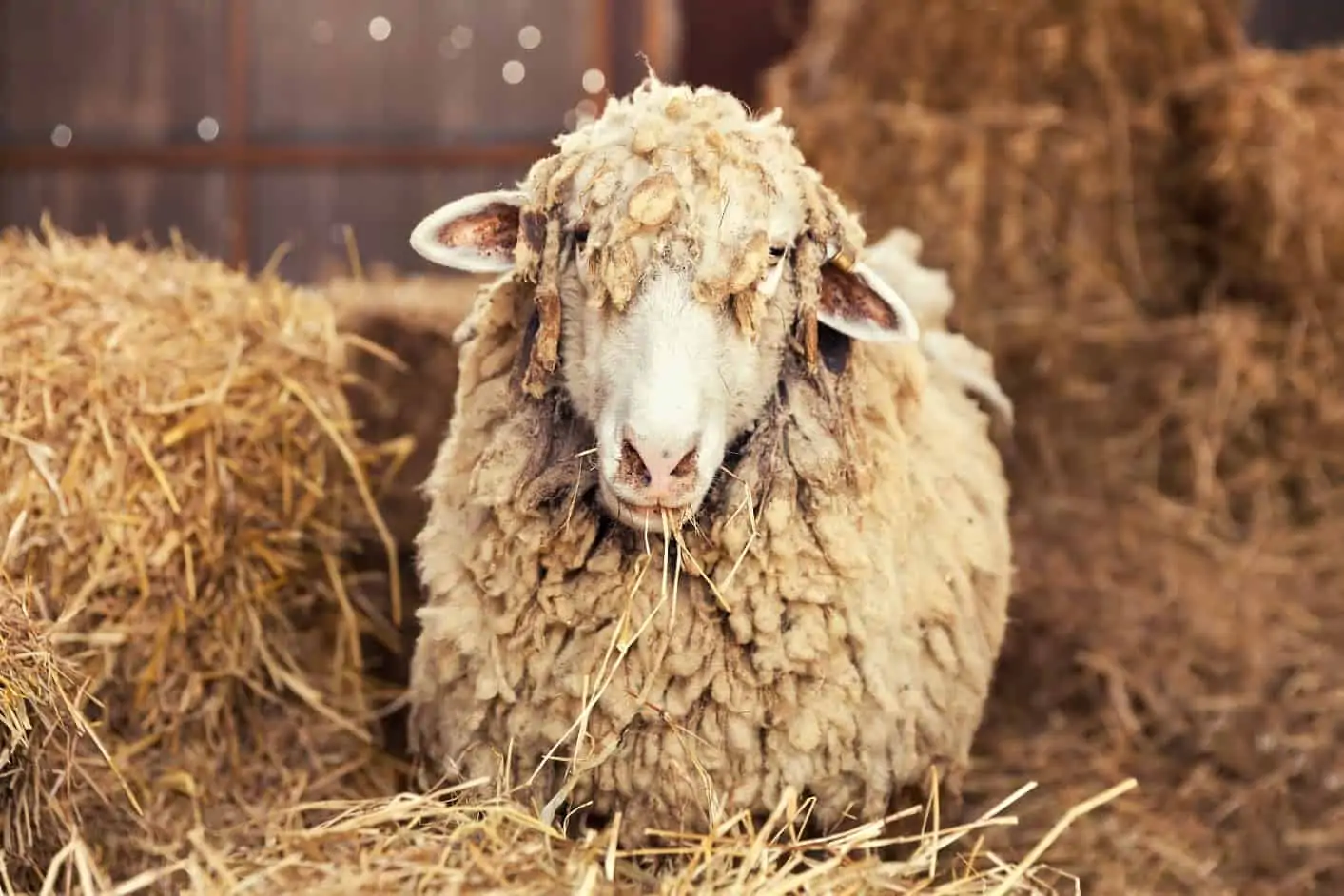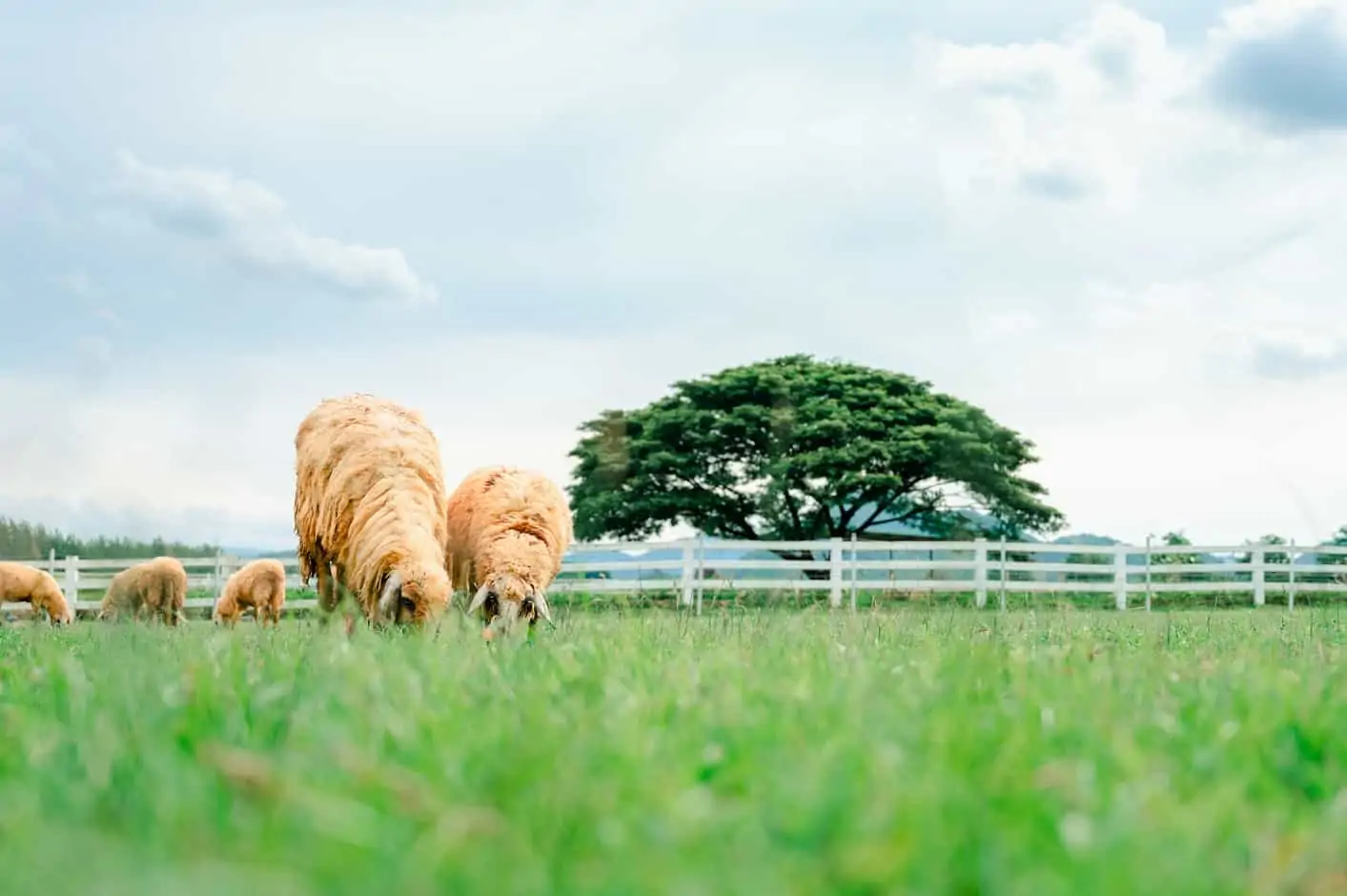
In recent weeks, a video showing a very woolly sheep has caused much controversy online. Baarack the sheep was found abandoned in a forest near Melbourne, Australia, by Edgar’s Mission Farm Sanctuary. Baarack was sporting a very impressive wool coat that he had obviously been growing for some time, but underneath it all was underweight and could hardly see.
He was given a new ‘fleece of life’ by sanctuary shearers, with the 35kg (or 77lb) coat of wool removed. Watch Baarack’s makeover for yourself here.
Many people have reported concerns about Baarack being sheared, claiming that it is an act of cruelty against sheep. So the question is – do sheep really need to be sheared, providing wool for products like our wool cushions and pure wool blankets, or is it kinder to let nature take its course?
A sheared sheep is a healthy sheep
Sheep shearing has a long history. Even since the first sheep were domesticated more than 10,000 years ago, sheep shearing has been a ritual for those caring for these animals. But sheep shearing in the modern-day isn’t a matter of keeping up with tradition.
Shearing is vital to ensuring a healthy, happy sheep. Shearing allows farmers to successfully identify any health issues — before they become more serious and often fatal problems. Mites, maggots, and other pests can harm sheep — causing infestations and injuries that would be hidden from view if the sheep’s coat was overgrown.
Thanks to shearing, weight loss can also be identified early and the underlying health problems can be remedied.
The wool itself can cause major mobility issues
Without shearing, the wool coat would become uncontrollably matted and tangled, and this too can impact the sheep’s health. A heavy, matted coat can restrict blood flow to the limbs resulting in sores and wounds that can prevent the sheep from enjoying full mobility.
Overgrown wool on the face can cause the sheep’s vision to be impaired too, which is particularly dangerous in any outdoor setting.
Overheating can occur more easily
Whilst wool is a summer staple for all of us, the same can’t be said for our sheep. Wool may be well known for its excellent, all-natural temperature regulating benefits, yet too much wool can cause overheating during the summer.
Tricia Holman explained more in this letter to The Guardian:
“So it is cruel to shear sheep (Shortcuts, G2, 26 November), according to Peta. On the contrary, for the majority of modern sheep it is cruel not to shear them. Domestic sheep do not naturally shed their winter coats. If one year’s wool is not removed by shearing, the next year’s growth just adds to it, resulting in sheep that overheat in summer. They have greatly decreased mobility and are in much greater danger from fly-strike, all of which causes suffering and possible death.”
An overly woolly coat can prevent nursing
An overgrown coat doesn’t just impact the sheep at the centre of it all. Should the sheep bear lambs, they too can be affected by the problems that come with a thick wool coat.
The coat can obscure the mother’s teats preventing lambs from nursing successfully. Without adequate nourishment the lamb will quickly die. With regular shearing, nursing mums can feed their lambs more easily.
The shearing process isn’t painful for the sheep
Whilst we can’t speak for every farmer, the vast majority who practise shearing do so with the sheep’s welfare firmly in their minds. With this, shearing a sheep should be compared to grooming a dog. Shearing should always be done safely and humanely by an experienced sheep shearer.
On that note, it’s important to mention that not all sheep need to be sheared. As Tricia touched on in her letter above, only domesticated sheep need to be sheared as most domesticated breeds do not shed their coats.
Unlike domesticated sheep, wild breeds shed their coats naturally from season to season to prevent unhealthy overgrowth.
Wool is a super sustainable must-have for us humans
Whether using wool as home insulation and floor coverings or donning it as part of your wardrobe via a chic wool scarf, shawl or cape, the natural wonders of wool trump man-made materials every time.
It’s incredibly eco-friendly, odour resistant, naturally flame and fire retardant, fully biodegradable, naturally water repellent, and a great temperature regulator amongst other things.
Whilst first and foremost, shearing away overgrown wool is great for the sheep, it’s also great for us humans. As our range of handcrafted, cosy and uniquely designed wool products show, it unlocks so many more benefits for you and your home.
Image: Cocos.Bounty / Shutterstock.com, GrooveZ / Shutterstock.com,
